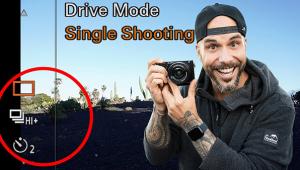All the points which have been mentioned above are comprehensive and need to be followed by all the photographers. For promoting your work, One need to have active social media accounts on popular social media platforms like P interest, Instagram, Facebook & Twitter. Share your work ,Increase your followers & convert into clients .If you do not get time for this then hiring a professional team like http://www.bbexmarketing.com/social_media.html would also be the best option .
Get Your Photos Out There!: How To Promote Your Work Online And Through Social Media

There are many photography businesses today successfully using online and social media marketing tools and techniques to make sales. But converting followers or web visitors to actual clients is still more art than science. We interviewed a group of market-savvy photographers to learn their tips on how to best promote your photography on the web. Thanks to our contributors: Marguerite Beaty, Crea8fotos; Lukas Dryja, CEO and Co-Founder of Format.com; Brian McMillen, BKM Photography; and Ian L. Sitren, Second Focus.
Shutterbug: What marketing features should a photographer look for when selecting an online portfolio service?
Ian L. Sitren: An online portfolio must provide ease of use, fast loading of large high-quality images across all monitor and system types as well as mobile, and total reliability. Do not build your own website or have some buddy do it for you when he gets off work at his regular job. There is too much to learn in the way of Internet website technology for you to ever keep up with and try to be in the business of being a photographer. And when that buddy who built and maintains your website gets a divorce and his wife gets the computer, your business goes down the drain. Scenarios like that happen all the time. If you want to be a professional, be professional and get a professional online portfolio website that is specifically for photographers.
Marguerite Beaty: It would be ideal to have an opt-in page to obtain e-mail addresses. Also, photographers should be able to add written information that will help their SEO and add their social media platforms. For example, adding Instagram is important as it will show a few more images and it will give the viewer a little window into the photographer’s life. A blog will help people understand more about the photographer’s working philosophies and obtain useful information. A blog will also help with SEO. It would be great to have an area to show videos. Photographers can show behind-the-scenes short videos or tips for getting ready for a shoot or fun photo experiences. The portfolio sites should be clean and interactive.
Lukas Dryja: First and foremost, a photographer should look for a website that works quickly on mobile. With more and more people consuming content on the go, there’s no excuse for slow load times and poor mobile design. Next, look for SEO tools that help make your content more discoverable. With Format, online portfolios are optimized so Google and other search engines can easily index your website. We’ve also just launched a new alt text editor, improving website accessibility and search engine indexing for imagery. To make it easier to share your latest work with the world, choose a service that links to your social media handles and allows you to share content directly from the application. Last but not least, look for a service that celebrates and promotes its community. You never know what kinds of new opportunities that exposure may bring.
Brian McMillen: I personally don’t use any online marketing that does not give me leads to the brides (my potential clients). I want actual phone numbers, e-mails, names, dates, budgets. This way, for the money I am spending, I get real contacts to the people making the decision to hire me.

SB: What are the best ways to build traffic for your online portfolio?
Ian L. Sitren: I really think all of this talk about SEO (Search Engine Optimization) is overblown. For one thing, if you have a well-designed website and follow all of the keywording and such, the website company should have all of the SEO working for you. Your website or online portfolio is really your office. That is where you tell people to come and see you.
Marguerite Beaty: I believe that an opt-in is a good idea. I also think that one has to find ways to interact with the potential customer and so I believe that the use of videos is becoming more and more important. Plus all the blogs and social media should guide the viewer to the website with the site’s address.
Brian McMillen: You can send out informational e-mails on how to hire a photographer, what to look for and what to ask, and be helpful—it’s not all about a hard sell “hire me.” Educate your clients, I think the biggest problem with photographers these days is they don’t try to educate the customer.
Lukas Dryja: Focus on filling your website with great work and getting it noticed. Here are a few suggestions: Drive people from your various social networks and communities to a central location (your portfolio) where you carefully curate their experience. Share your online portfolio with your personal, professional, and online networks. When someone appreciates your art, they’ll be inclined to share it with others too. Connect with publications that cover your caliber and stream of work. Often they are happy to promote undiscovered talent and they’ll link to your site in a feature article. The more profiles and stories linking to your portfolio, the better your SEO position in Google and other search engines will be.

SB: How do you convert online visitors to photography clients?
Ian L. Sitren: It is very important to not oversell. I see other photographers constantly, many times per day, specifically telling and asking people to shoot with them or magazines to hire them. It comes across as begging and very unprofessional. Learn to soft sell! Just let people know what you do and let your work speak for itself.
Marguerite Beaty: This is the most important part of marketing. I think that once the customer is on the site there should be easy ways for the customer to speak to the photographer. A phone number and an e-mail address should be available.
Lukas Dryja: Clients will be most likely to engage you when they identify with your work. So consider your strengths and hone in on a specialty that you know you can excel at and know that clients desire. Perfect this work and become known for it. Next, build a website that best represents your brand and aesthetic. Be sure to edit your body of work to showcase your best photography up front—so the attention of the visitor is captured immediately. Once you’ve attracted people to your site, make it both easy for them to get in touch with you now and to stay up to date with your news. Consider an e-newsletter.
Brian McMillen: I don’t post my prices but if clients fill out a short form on what they are interested in they will get an instant quote; they can’t do this without giving me contact info. With that contact information, I quickly follow up.

SB: How should the different social media and mobile apps be used to promote a photography business?
Ian L. Sitren: Social media provides immediate and free access to everyone. You should be using it to expand your circle of friends and followers. Let them see what you do and know what you do. Just the same as the people you have drinks with on Friday night or see at the gym. The more people in your social group will mean more people likely to use or recommend your services.
Lukas Dryja: Social media is a great avenue for storytelling. I find it is best used to add a human element to one’s practice: share tips, post behind-the-scenes photos, gather feedback, crowdsource solutions from industry professionals, and interact with clients. But it’s important to remember that these profiles—like your website—are a representation of your brand. It’s better to properly maintain three select channels than slack on 10.
Look for mobile tools that make it easier—not harder—to manage your presence and work on the go. For example, the free iPad app, Kredo, saves you time by serving dual purposes; it’s both an in-person presentation tool and global discovery network.
Marguerite Beaty: They should be used as a marketing tool to gain exposure before thinking about sales. Mobile apps should have a call to action and a site address or at least the site address if it’s not possible to add more. The photographer should know his or her customer very well and communicate in a way that will relate to them. It’s important to know how much selling should be done and how much sharing should be done. I could give a number here but I really think that if you know your customer well you will know how to communicate with them. The only thing I can say is that if a site is only about sales, it will turn people off.
When you find out what social media platforms your customers and potential customers use you can communicate on a different level. Here are some tips: Are your customers female? Get on Pinterest. Instagram allows you to tag someone. You can write interesting tips or information about a subject and tag a specific person. Comment on their posts a few times a week. Show them that you support them and that you are interested in their views. I find that this is something people are forgetting to do. Everyone is so worried about getting more followers. I believe that it’s a good idea to focus on good followers. You should post videos that educate people in a fun way about your product and your business. I think people may want to pay more attention to Periscope. It was bought by Twitter and it’s a video platform. It’s a cool platform. Use it strategically to show behind-the-scenes work.
Resources
Marguerite Beaty: linkedin.com/in/margueritebeaty
Lukas Dryja: format.com
Brian McMillen: bkmphoto.com
Ian L. Sitren: secondfocus.com
- Log in or register to post comments










































